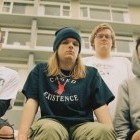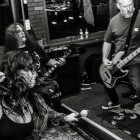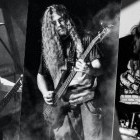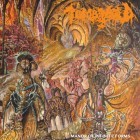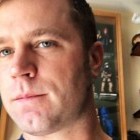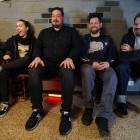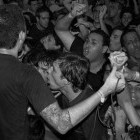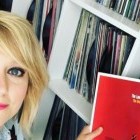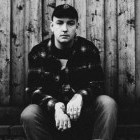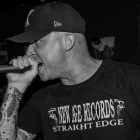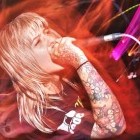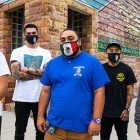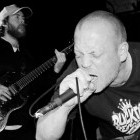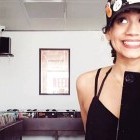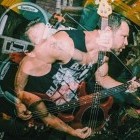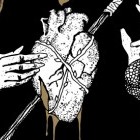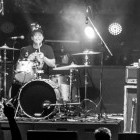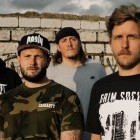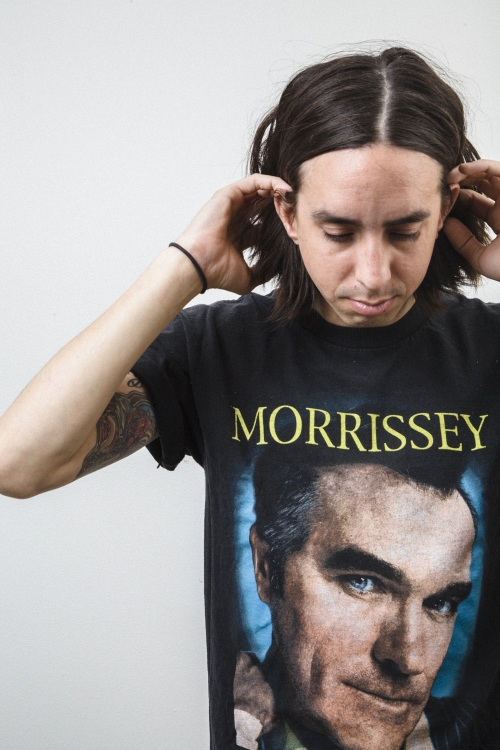
Allix Johnson is a photographer based in my neck of the woods here in Southern California. There's a good chance you've seen his stuff since the guy has done work for such folks as Deathwish Inc, New Noise Magazine, NPR, and Run for Cover Records. His latest project is Posthumous Loves, a book that sees Allix joining forces with Bay Area writer Anthony Crupi for a collection of writs and photos that "interweaves nightmares and daydreams within a world far from fiction yet far from truth." The limited edition book will be out in October and can be pre-ordered from Glory Kid at this link.
In anticipation of the release of Posthumous Loves, I spoke with Allix for a new Photographer Spotlight feature.
Where were you born and raised, and were your parents into the arts?
I grew up in Orange, CA. My mom wasn't really into art, but was punk in the '80s. My dad is Alaskan Native American, Tlingit specifically. He lived most of his life in Angoon, AK which is a reservation on an island about 100 miles south of Juneau. He sent me a lot of his tribe's traditional drawings and carvings he made when I was growing up. I didn't meet him until I was 23, when I flew up there and spent a couple weeks with him at a Tlingit-Haida celebration where traditional songs and dances were performed, and art displayed.
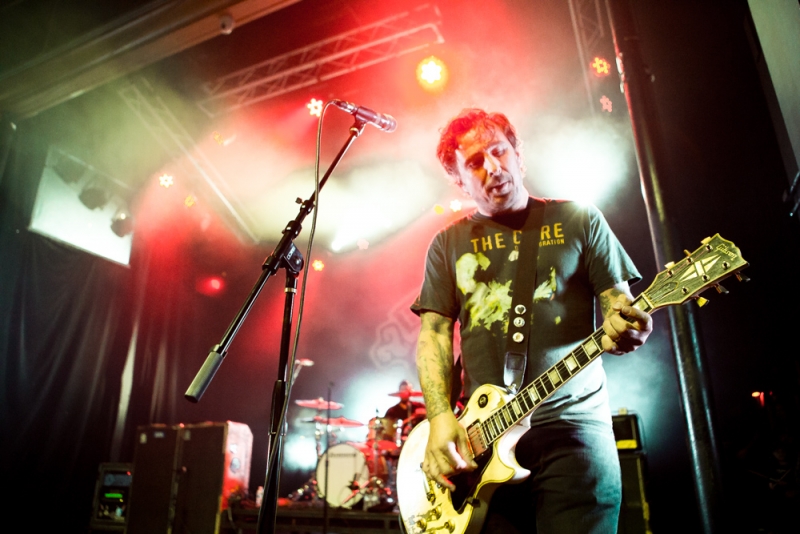
When did you get into music and what kind of stuff did you gravitate towards early on?
I have a vivid memory of my mom having the hip-hop station 92.3 The Beat on the radio while driving me to kindergarten in the early to mid-'90s. My stepsister was about four years older than me and had MTV on pretty often and I watched the 1999 Woodstock Festival. Rage Against the Machine's set got me really interested in more aggressive music. The first CD I ever got was Lil Bow Wow Beware of Dog for Christmas along with a stereo. Shortly after, my cousin gave me MxPx's Let It Happen in an attempt to lead me in the right direction. After that I just tried to find any music I could.
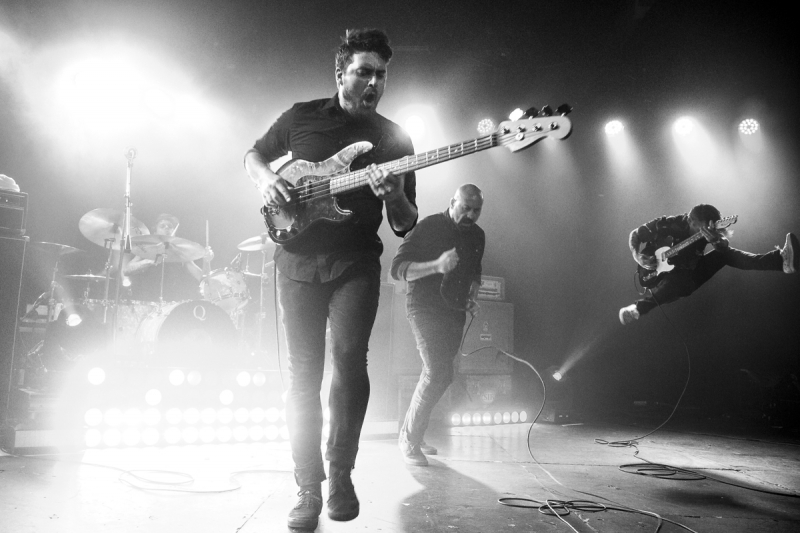
A friend in my neighborhood showed me blink-182 and Bad Religion, I signed up for Columbia House CD thing where they send you like 20 CDs for a penny or something. I did it so many times under different names [laughs]. Somehow, I ended up on Drive-Thru Records street team and they would send me boxes of posters, stickers, comps, whatever to pass out to friends. Nobody wanted them [laughs].
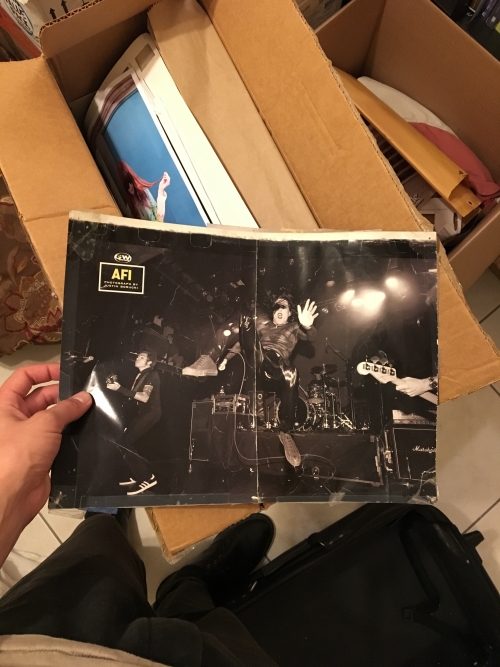
In 7th or 8th Grade (2002-ish), a friend showed me this mix CD in his room that another friend gave him. It had Zao, Eighteen Visions, Bleeding Through, Martyr AD, and some local bands I can't remember, on it. I officially found hardcore and straight edge, and found more bands by ordering sampler comps from the address in the CD booklet and looking up other bands on show flyers. Kids at school showed me stuff like Nirvana, Rooney, Weezer, Garbage, Ramones, Hole, etc., which I wrote in pen all over my Converse. I spent so much time on my computer going through message boards, downloading everything off Kazaa, and at Pepperland Records, across the street from my house, talking about music and finding new bands to listen to. I wanted anything I could get my hands on, and eventually became the kid in school that was the bridge between the punks, hardcore kids, emo kids, and goths. Top 10 punk/hardcore-related bands by the time I was 18 were Converge, Minor Threat, Adolescents, Zao, Eighteen Visions, The Locust, AFI, The Chariot, Christian Death, and Gorilla Biscuits.
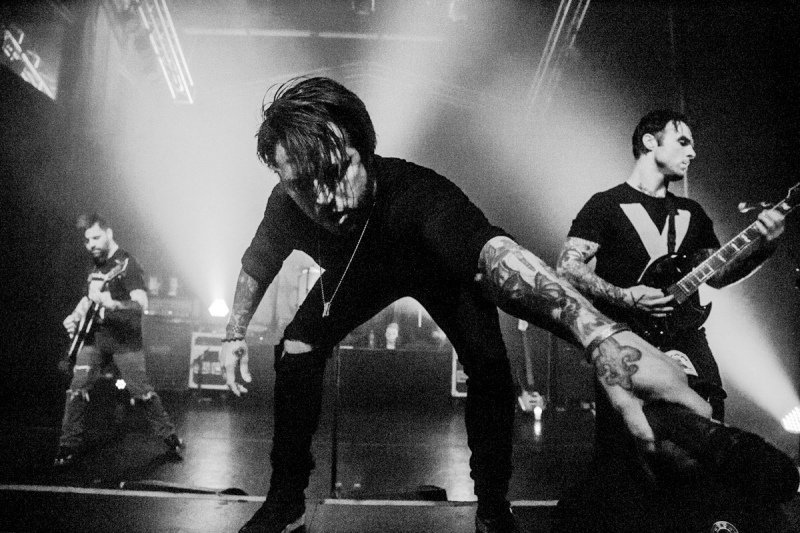
Who were some of the photographers you looked up to during your formative years?
I don't really remember names, but I had subscriptions to Thrasher and Alternative Press (I think, it might have been some other music magazine). I tore out pages of my favorite photos and filled the walls in my room.

Were there any music-related photographers you followed?
Ryan Russell's portrait of Jake Bannon got me stuck on him. I've followed him ever since then. I think I was 15 at that time. I was so intrigued that he shot with film I wanted to try the same. Whoever ReturnToThePit.com from Boston is was so cool because he would have photos up within like 12 hours of whatever show he shot. Cameron Gardner, who went by Intrepid Photography, was one of the main kids that shot shows around Orange County. Dan Rawe, who has been shooting since the '90s, and still is at almost every hardcore show happening in Southern California.

What is your camera and post set up?
I started off with and still prefer to work with film. I mostly use the first camera I ever bought, a Pentax k1000 and 50mm or 28mm and mostly stick to Kodak Portra or Tri-x. I've pretty much just been experimenting with different cameras in recent years: a Canon SureShot Owl point and shoot, Yashica Electro, Canon Rebel 2000 (which is actually compatible with all newer digital EF mount lenses, so sick), Polaroid Land Camera, disposable cameras, expired film, whatever is cheap or free. I scan my negatives with an Epson V600.
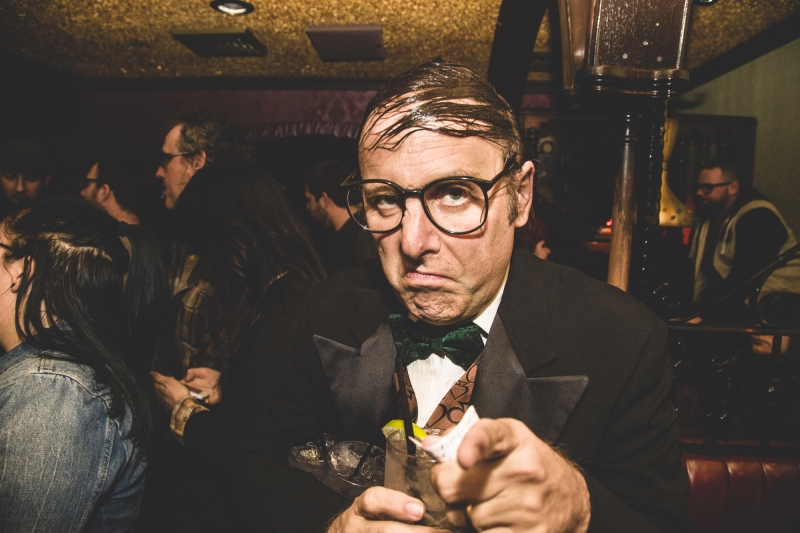
I never actually owned a digital camera until this year. About two years ago, I was in a photography program at Orange Coast College specifically to abuse access to their equipment and basically learned on a Canon 5D Mark iii. In January I bought a Canon 6D and 24-105mm, and I typically rent a 70-200mm 2.8. I edit everything in Lightroom, I know a little bit about Photoshop but don't spend much time in it.

Who are some of your favorite bands to shoot?
Honestly, I'm still kind of new to taking music photography "seriously." I shot shows occasionally in high school, but stuck with portraits, landscapes, and candid stuff until about three or four years ago. Unbroken's final show was really fun and one of the photos I got from that is among the few prints I've actually sold. I prefer to still be in the crowd and enjoying the show instead of off to the side, so if it's not commercial work I'll use whatever camera I don't care about breaking and throw myself into oblivion, occasionally stopping to take a photo. Last time that happened though was at Dillinger Escape Plan, I went too hard and ended up puking during the last song. I feel like the photos I got from that show kind of embody that nauseating feeling.
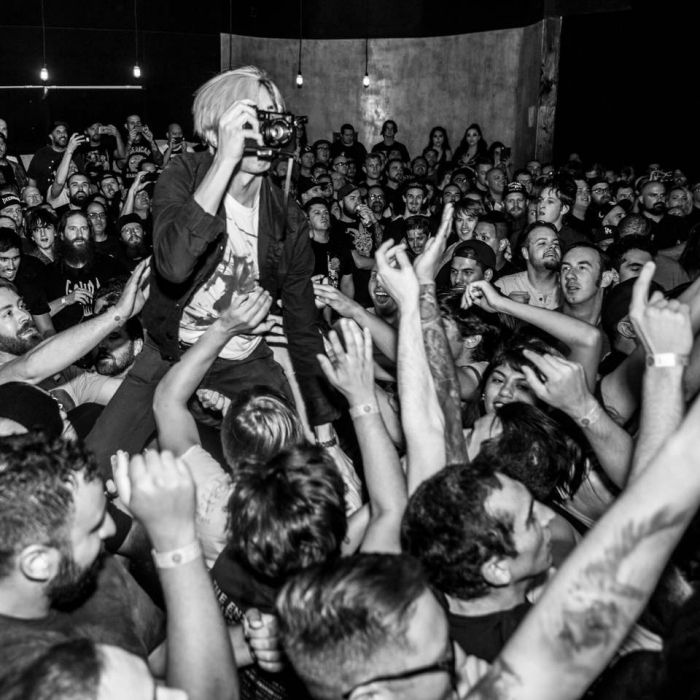
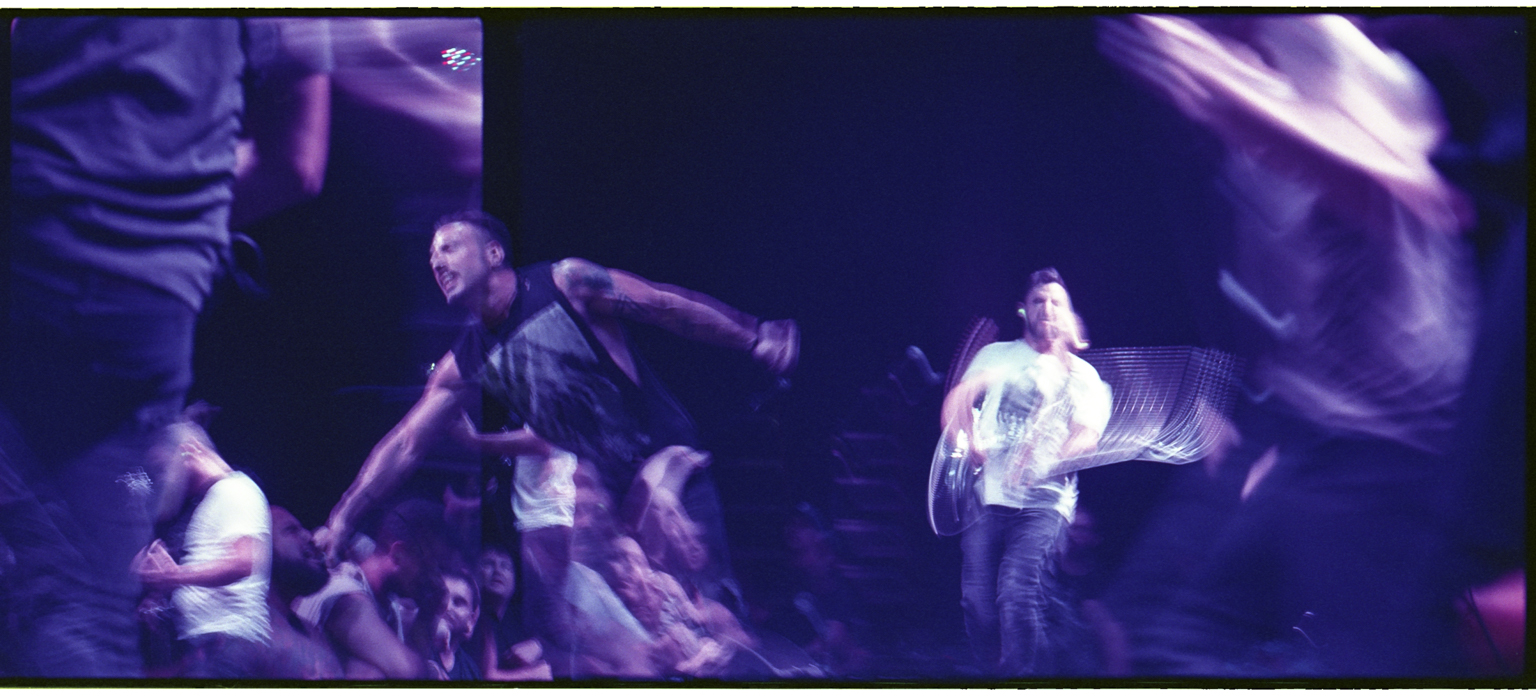
My friend, Benny in Hemingway, was one of the first bands to ask me to take their portrait and they turned out to be the band I've shot and toured with the most. OC Weekly approached me after seeing a photo I shot of Neil Hamburger asking to shoot with them and everything just snowballed from there. They sent me to shoot Coachella, Burger Records x Observatory fest, Beach Goth, and have gotten me access into most of shows I've requested to shoot.
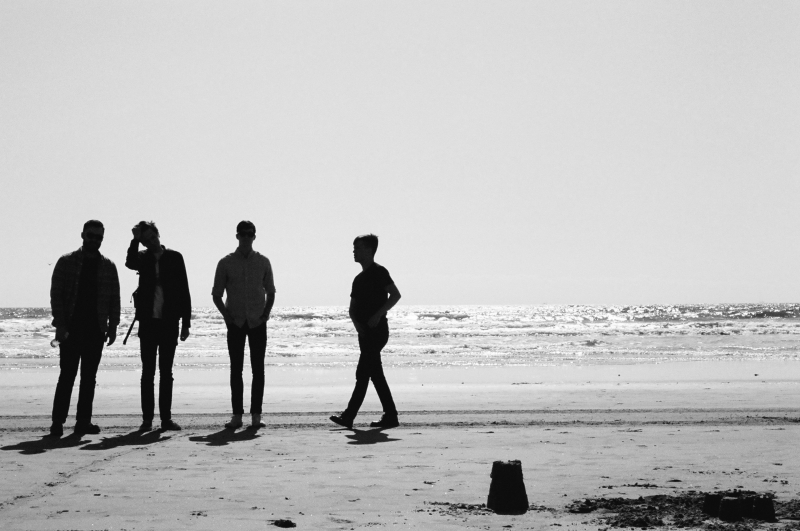
I think I really prefer taking portraits of bands right after they play. I get to have a sort of intimate moment from a show that other photographers from that show wouldn't have and gain friendships with musicians I like. Bane, Zao, Don Bolles, Walter Schreifels, Taken, Black Breath, The Album Leaf, just to name some off the top of my head.
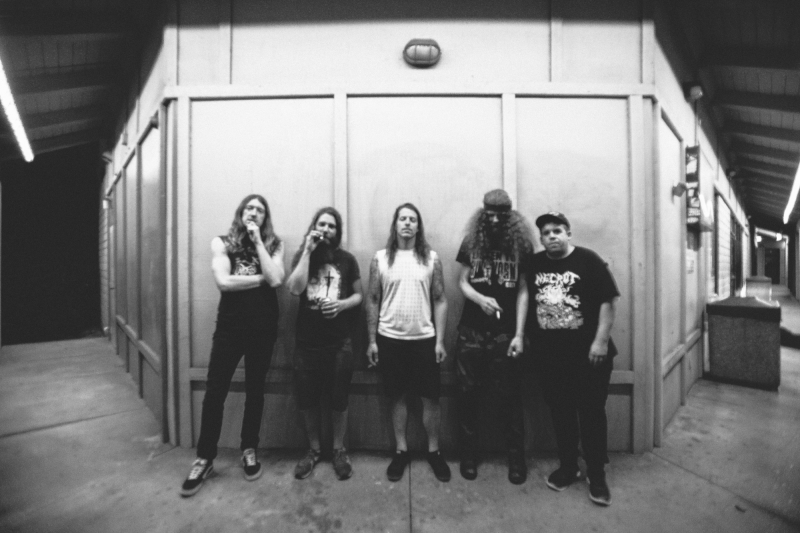
If you could go back in time, who are some bands that you would have loved to shoot?
Cynthia Connolly's and Glen E Friedman's photos from the punk scene in the 80s always blow me away. Photos of Morrissey from Viva Hate to Vauxhall and I-era are so incredibly iconic. Jim Jocoy's portraits of punks in the late '70s to early '80s are totally inspiring, Jim Marshall's photos from the Playboy Jazz Festival around the '60s are gorgeous. I'd love to have been doing what they were all doing in their time.
What are the toughest aspects to shooting live music events?
Trying to get a shot without obstructing everyone's view or experience, dealing with over-aggressive meathead security guards when shooting larger concerts, personal anxiety or trying to break out of my shell, I get really self-conscious and don't want to be an asshole so it takes me a bit to get comfortable enough to start shooting. I normally use the first band or two to get past that initial fear. I actually started bringing a camera with me to shows as a way to kind of keep myself busy while feeling isolated, an alone in a crowd kind of thing. Remaining as creative as possible to set myself apart from the person next to me shooting the same exact thing. Neon lights are the worst with digital, but create awesome results when shooting with film.
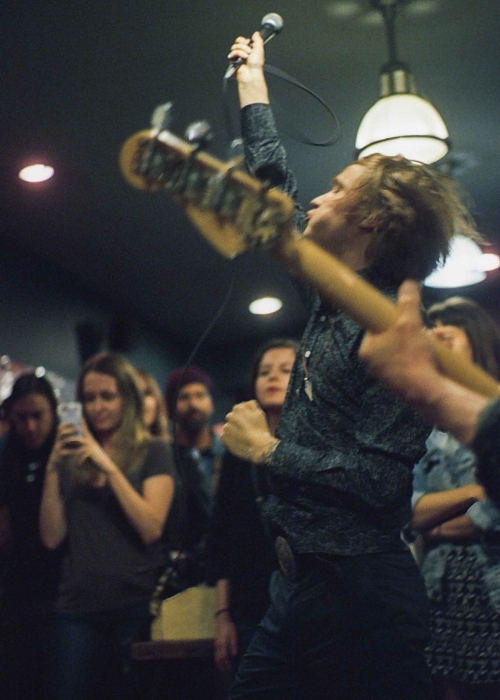
Tell me about some newer bands that we should all be on the lookout for.
Never Young from Oakland are some friends who have been in hardcore bands but branched out into an indie-ish sound. Kind of like Minor Threat going into Fugazi. They don't agree with me, but that's the vibe I get. Miserable is a slow, dissonant, and spooky band. My roommate's band, Media Jeweler, is really fun instrumental stuff. Celeste is a French black metal band that wears red headlamps while they play. I'm really anticipating Quicksand's new record coming up soon. Sister Rust is members of Seizures and super-technical metalcore that almost kind of reminds me of Curl Up And Die. Fullerton has a really lively music scene going right now with shows happening almost every night at Programme Skate & Sound, Continental Room, Ziings, random warehouses, and living rooms. I'm really sad I don't live there anymore. The Smiths are cool. The Pains of Being Pure at Heart are putting out a new record soon and the singles sound really matured from their older stuff. Lately, under the hardcore umbrella, off the top of my head, I'm really into Vein, Full of Hell, Angel Du$t/Turnstile, Outlet, Leisure World, The Coltranes, Super Unison, Mossbreaker, and Daisy Chain.

Who are some modern-day photographers that you admire?
For music, I really love: Reid Haithcock, Evan Burke (Falldownhard), Rob Wallace, Ryan Russell, Daniel Torres, Natalie Somekh, Manny Mares, Dan Rawe, and Furn Zavala.
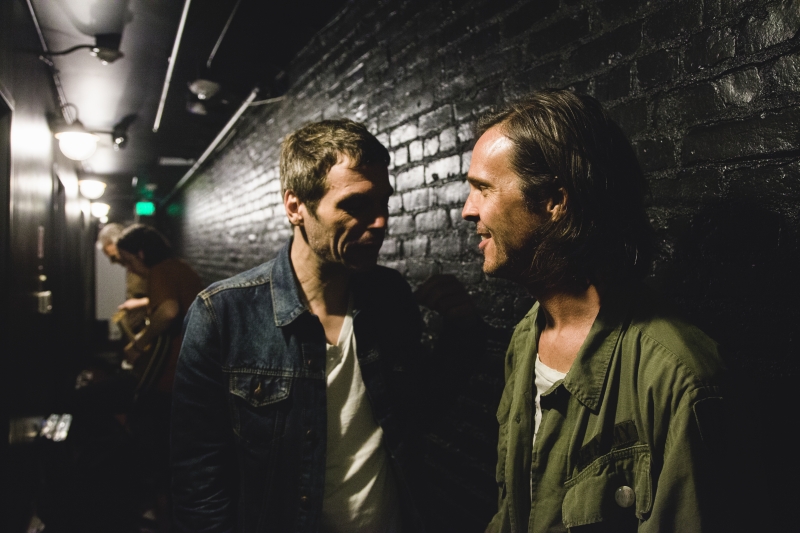
Generally, artistic-wise, some of my favorites are: Ed and Deanna Templeton, Jason Lee, Matthew DeFeo, Jenavieve Belair, Ian Shelton, Danielle Ernst, Brenton Salo, Cole Wilson, Sean Aguilar, Parker Day, Derek Yarra...honestly there are so many I can't name them all.
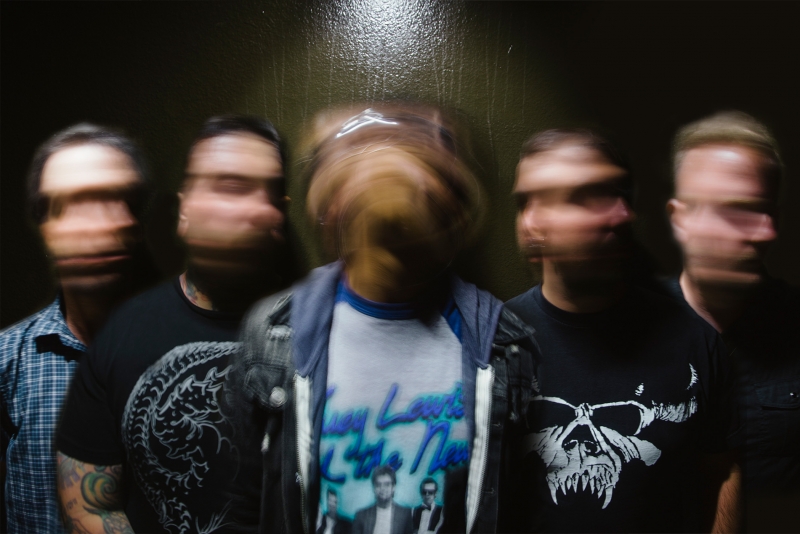
If you had to pick one of your photos that best encapsulates why you love shooting hardcore bands, which one would it by and why?
I'd have to say this photo from Unbroken's last show. It doesn't show faces, which is a common theme in a lot of my photos. This one in particular was right as I rolled onto the stage. I turned to run and dive on top of that crowd but snapped this photo right before. It shows the true energy felt at a hardcore show: no barrier separating anyone, people flying, fists in the air, yelling the lyrics at the top of their lungs, I only see one girl in the photo but I remember there being more women participating, full inclusion and acknowledgement of all genders, weirdos, freaks, and outcasts.
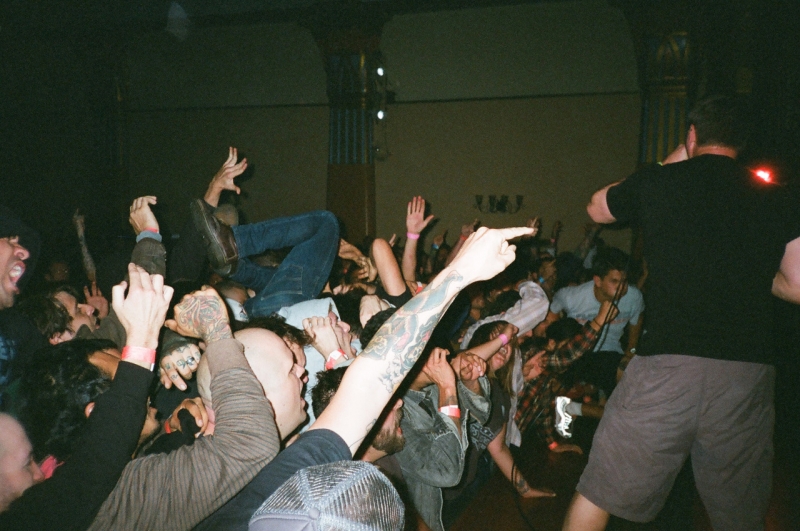
***
See more of Allix's work on his official site and Instagram, and head over to Glory Kid to see more details about the Posthumous Love book.
Tagged: allix johnson, photographer spotlight
